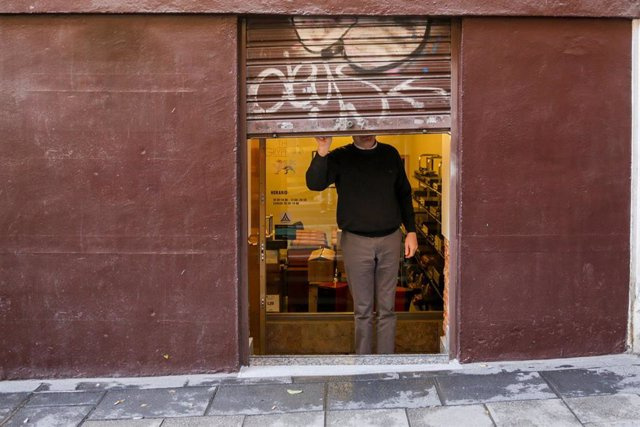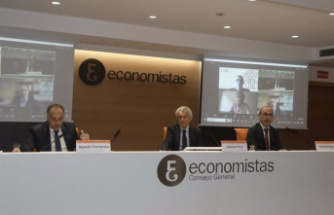MADRID, 1 Ene. (EUROPA PRESS) -
The new contribution system for the self-employed by real income, which will have a transition period of nine years, until 2032, will begin to be applied as of this January 1, with 15 installment tranches that will range from 230 euros to 500 euros and will vary until 2025, based on the net income of self-employed workers.
This system is the result of an agreement between the Government and the self-employed organizations ATA, UPTA and Uatae and has 15 sections for the years 2023, 2024 and 2025. The self-employed will have the possibility of changing sections every two months, with a total of six changes a year, to adapt your contribution to income forecasts at each time of the year and your professional activity.
The new system defines the concept of net income, which will be calculated by deducting from income all the expenses incurred in carrying out the activity and necessary for the self-employed person to obtain income.
On that amount, a deduction for generic expenses of 7% (3% for self-employed companies) will additionally be applied. The result will be the figure that will determine the contribution base and the corresponding fee.
At the end of the fiscal year and once the annual net income is known, the contributions will be regularized, reimbursing or claiming installments in the event that the final net income tranche is below or above that indicated by the forecasts during the year.
With the new contribution system, it is expected that one in two self-employed workers will have a lower contribution than the current one, while 25% will contribute more and 25% will contribute less.
In 2023, the fee for a self-employed person with net income (income minus expenses) equal to or less than the Minimum Interprofessional Salary will be 230 euros. In 2024, it will be reduced to 225 and in 2025, you will pay 200 euros.
For those with net income of more than 1,300 euros and less than or equal to 1,500 euros, and more than 1,500 euros and less than or equal to 1,700 euros, the fee will remain at 294 euros during the three years.
While in the lower yield tranches the quota also decreases between 2023 and 2025, from net yields above 1,700 euros the quota increases throughout those three years.
Thus, a self-employed person who presents net income above 3,620 euros and up to 4,050 euros, or equal to that amount, (tranche 13) will pay 100 euros more in quota between 2023 and 2025. In 2023, he will begin to pay 390 euros, it will go up to 400 euros in 2024 and to 490 in 2025.
In the last section, the fifteenth, are all the self-employed with net income of more than 6,000 euros. Its quota for this 2023 will be 500 euros, it will rise to 530 euros the following year and it will reach 590 euros in 2025.
After those three years, the Government and social agents will have to agree on the sections for the coming years, until 2032.
The flat rate of the current Special Scheme for Self-Employed Workers (RETA) is also included in the new model, although it will be called a reduced fee for self-employed workers who start their activity and will be 80 euros per month for twelve months for all new self-employed workers.
After that period, this reduced fee will only be extended for the self-employed who have not managed to get their returns to take off and remain below the Minimum Interprofessional Wage (SMI). For the rest, the fee corresponding to their contribution bracket will be applied according to their net income.
This new contribution system also aims to improve the pensions of self-employed workers, which are currently 43% lower than those of employees, as well as guarantee their social benefits.
This difference between the pensions of the self-employed and salaried workers, of about 600 euros per month, is due to the fact that 84% of RETA members contribute to the minimum base, of about 300 euros, which affects their retirement pension.
In view of the fact that the current benefit system for the self-employed did not meet its qualitative or quantitative objectives, within the partial cessation a benefit has been established for the self-employed with workers, for the self-employed without workers and due to force majeure. None of them will have to unsubscribe from RETA or close the establishment. The benefit will be the equivalent of 50% of the regulatory base and will be compatible with another activity, for a period of between four months and two years.
The General Treasury of Social Security (TGSS) has launched an information simulator for self-employed workers to calculate the quota that corresponds to them with the new contribution system for net income that will come into operation with the arrival of 2023.
This calculator is available through the Importass portal (//portal.seg-social.gob.es), in the public area, where there is also information about the new system, the keys on how to calculate returns and the steps to continue in the coming months.
The self-employed person must indicate the section in which the returns that are expected to be obtained are found and the simulator will show the minimum and maximum fee for each corresponding section.
The Social Security calculator will also offer a breakdown of contributions, such as common contingencies, professional contingencies, cessation of activity and professional training, as well as the contribution base. It will also allow self-employed workers to know the benefits to which they are entitled, according to their contribution base.
In addition, starting this month of January, Importass will incorporate new functionalities to manage procedures under the new system. In this way, the self-employed will be able to communicate the expected returns, easily choose their contribution base or request and modify the applicable benefits.
Social Security also provides for the development of another custom simulator.













